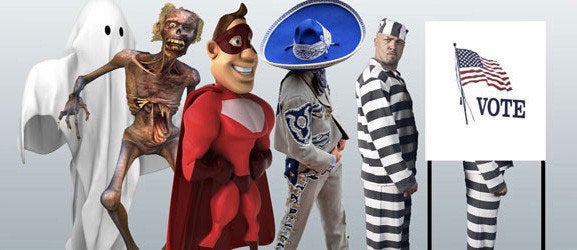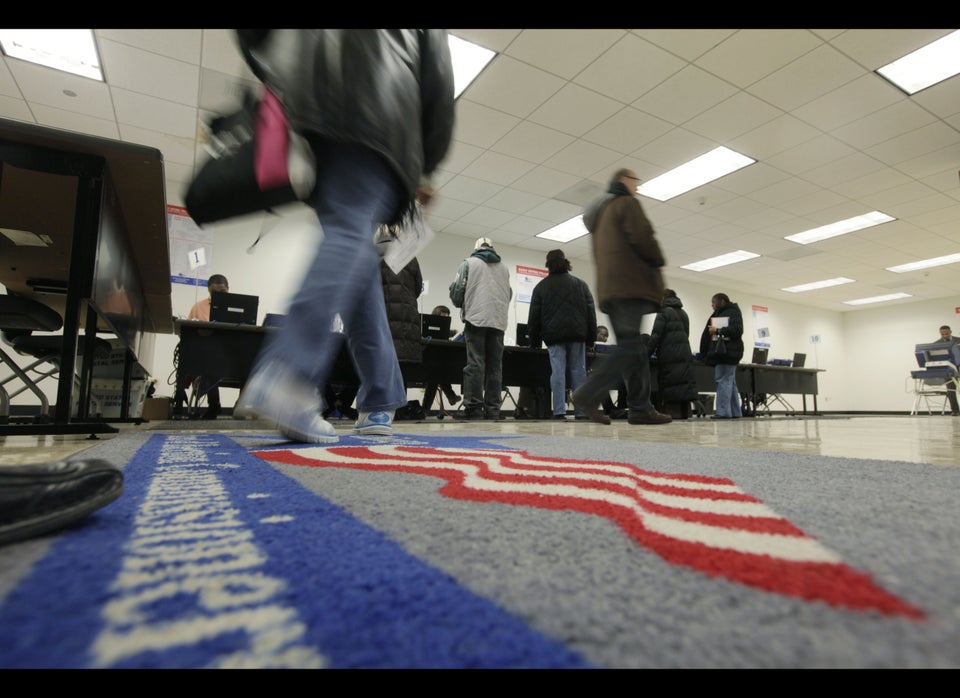
On first hearing, voter ID laws sound like an obvious and innocent idea. After all, don't you need ID for everything else these days? So it's not surprising that 80 percent of Minnesotans polled last year said they favored a proposed state ballot measure that would have required voters to present a government-issued photo ID before voting.
But then progressive groups launched a massive education campaign, telling people what it would really mean. And despite starting 60 points behind in the polls, come Election Day they defeated the measure by a 54-to-46 margin.
Dan McGrath, executive director of TakeAction Minnesota, the citizens group that led the campaign against the measure, said his team didn't have the luxury of trying to persuade undecided voters or improve turnout. They had to change people's minds.
And over time, that's what they did, educating the public about the consequences to seniors and others for whom getting ID can be hugely burdensome, about how much the measure would cost taxpayers, and about the complications created by its ambiguous wording.
"On average, we changed 20 to 30 percent of 'yes' or 'undecided' voters to become 'no' voters after a conversation on the phone," McGrath said. "This was a consistent margin from September through Election Day. We literally pulled away support for the amendment and added it to our column night after night."
The measure had "very broad support," he said, "but very, very shallow support." Initial reactions tended to be reflexive, rather than considered.
And as opponents made their case, a measure that had been thought a no-brainer became widely seen as controversial and expensive and arguably an attempt by Republican leaders to leverage the naivete of some Minnesotans -- and the racial anxiety of others -- to their partisan advantage.
"There's no getting around the racial aspect," said McGrath.
Minnesota is becoming increasingly diverse, while its senior citizens are largely white. "The vote restrictors" as McGrath calls them, "were preying on a lot of racial anxiety on behalf of white people."
The pitch by advocates of voter ID laws and other measures to restrict voting is that they are necessary to prevent voter fraud, which they insist is rampant and poses a serious danger to the electoral process. The factual record, however, shows that voter fraud is extremely rare -- and the kind that voter ID could actually prevent is virtually nonexistent.
"Voter impersonation has literally never happened in the state of Minnesota's history," McGrath said.
So how do you scare people about voter fraud if there isn't any? One way is to tap into other fears -- fear of being displaced, fear of being robbed, fear of people who aren't like you.
These days, most political appeals to racial anxiety are subtle. The official spokesmen of the national voter ID movement speak smoothly and euphemistically about the "illegal alien" and "urban" voters who are purportedly committing fraud, even as they forcefully deny any racist intent.
But in Minnesota, the pro-voter ID consortium wasn't subtle at all, publishing a cartoon depicting people lined up to vote: the first person in line was an African American in prison stripes; the second was a mariachi player in a sombrero.
(A spokesman for the consortium told Minnesota Public Radio it was "coincidental" that the felon attempting to vote was African American, and that the person in the mariachi costume was "supposed to be an illegal immigrant.")
There were also billboards saying "Report Voter Fraud" and featuring a photo of a black man and two white people in prison garb, with the black man grabbing the prison bars.
"'Who is stealing your vote?' That's the seed they're trying to plant," McGrath said.
McGrath said the belief that voter fraud exists is so widespread -- despite the evidence to the contrary -- that opponents of the measure didn't even try to refute it.
"Fraud is their frame. We had to not argue on those grounds," he said.
The campaign also found it more effective to focus on the costs and complications associated with specific elements of the measure than to spend a lot of time familiarizing the majority of people who have ID with the plight of those who don't. The ads mentioned how the measure would make it harder for some seniors and military servicemembers to vote, but didn't attempt to get people to comprehend what life is like for the least fortunate and least empowered in our society, including those without easy access to documents or transportation.
The disenfranchisement that results from strict requirements for current, government-issued photo ID is concentrated in certain demographic groups, among the elderly, the poor, the disabled and non-drivers. Many are minorities; many vote Democratic.
Minnesota was the only state with a voter ID measure on its ballot this year. In several other states, Republican-majority legislatures passed strict voter ID bills. Judges blocked their implementation in November, but the judges typically objected more to the unbecoming haste with which Republicans were trying to get them instituted than to the laws on their face -- and most are now on the books for the next election.
McGrath said the public's rejection of the voter ID measure in Minnesota has significance beyond the state's borders. "We've landed a punch in the gut to a national movement to suppress the vote," he said.
Doug Chapin, who runs a program in election administration at the University of Minnesota, wrote this week: "Until now, one of the strongest talking points in favor of voter ID was that it was a common-sense requirement supported overwhelmingly by the public. Minnesota's rejection of voter ID provides a counterpoint to that argument; indeed, I would expect that from now on voter ID opponents across the nation will point to the Minnesota result as evidence that not all voters think ID is a good idea, let alone common sense."
And Frank Wright, the former managing editor of the Minneapolis Star Tribune, wrote for MinnPost: "If you give the people enough time, they usually will do the right thing."

